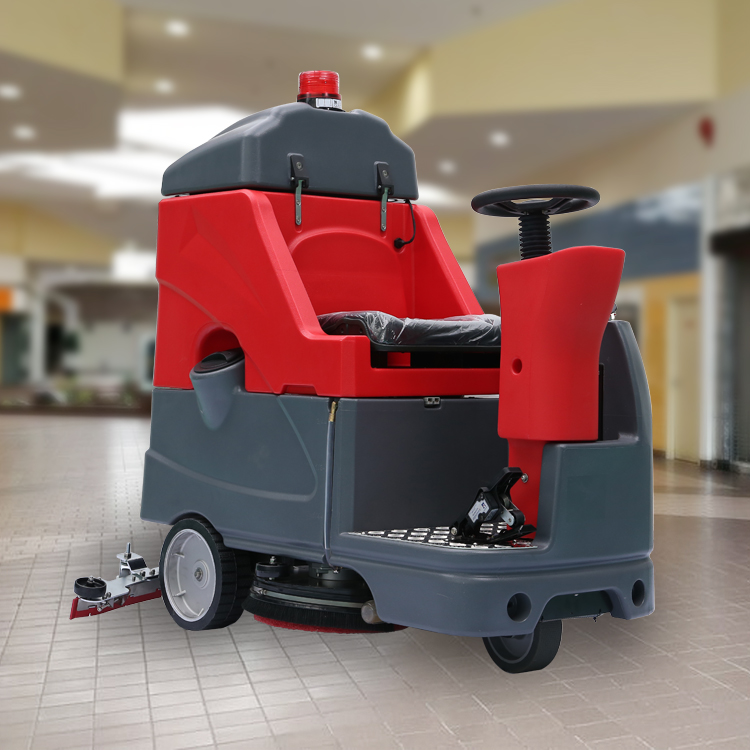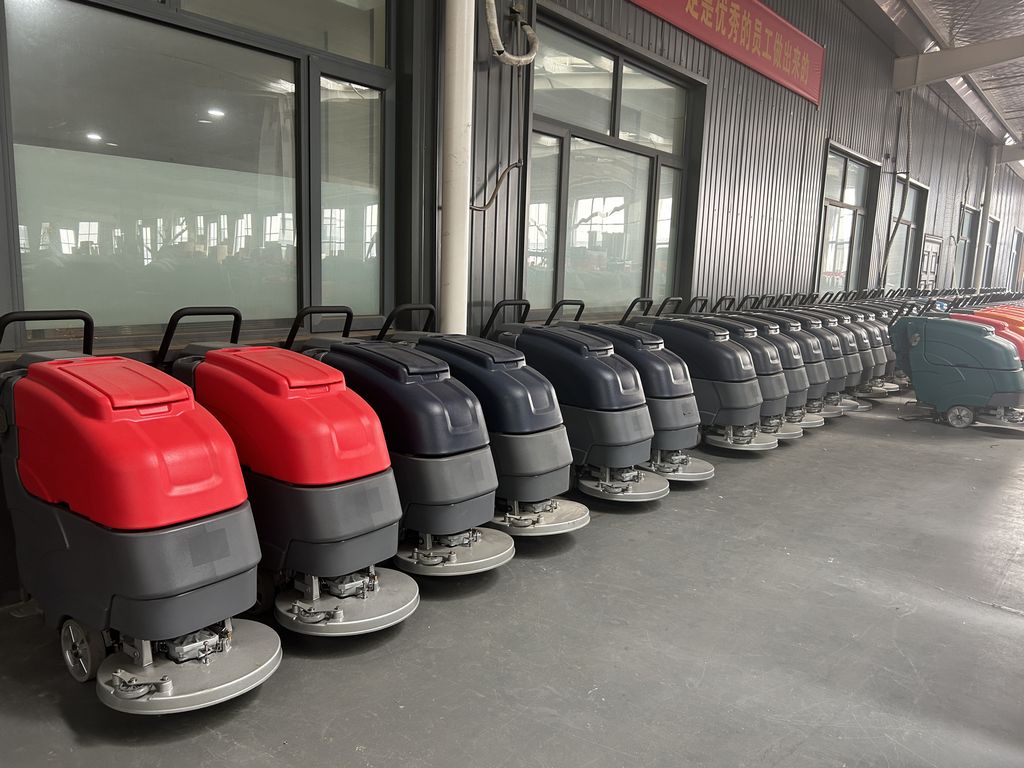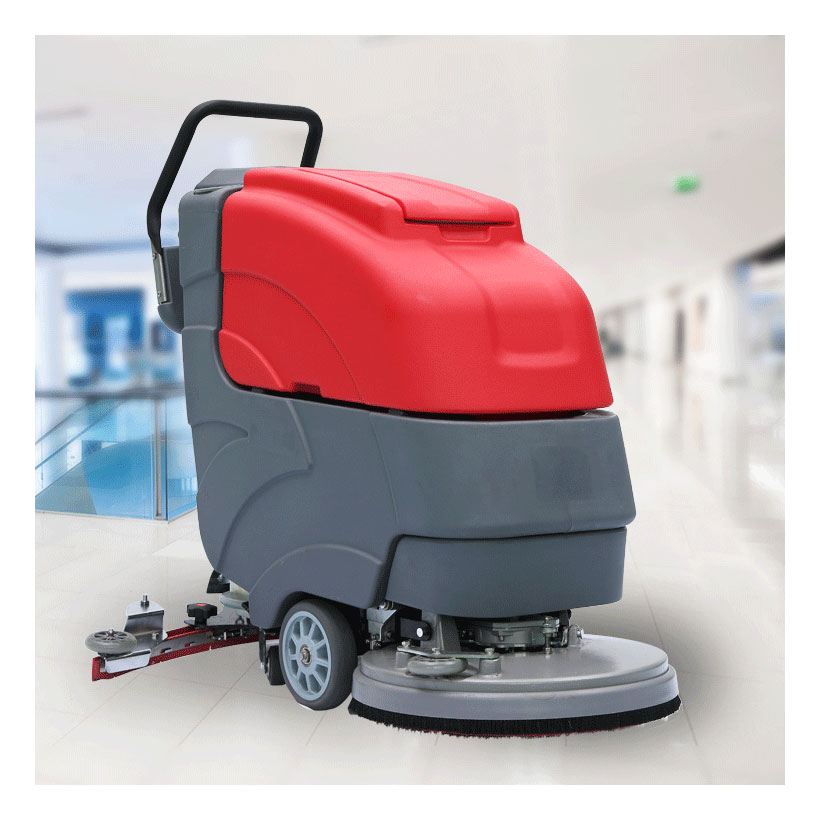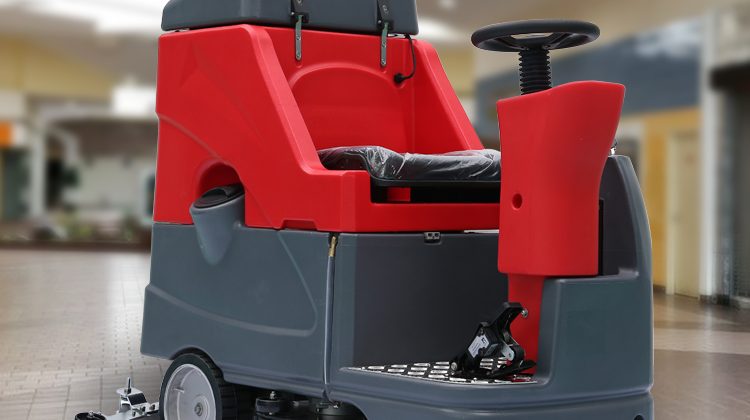
So last week, my coworker Dave tried to clean our warehouse floor with a mop bucket like it’s 1995. Let’s just say it didn’t end well—water everywhere, half-cleaned grease spots, and three hours wasted. That’s when I finally convinced the boss to invest in a proper industrial floor scrubbing machine. Let me share what I wish we’d known earlier.
First off, not all industrial floor scrubbing machines are built the same. Some look like fancy robots straight out of a sci-fi movie, while others resemble overgrown lawnmowers. The key is matching the machine to your space. Bigger facilities? Go for ride-on models—they’ll save your team’s knees and sanity. Smaller areas? A compact walk-behind unit does the trick without eating up storage space.
Here’s a weird thing I noticed: everyone obsesses over scrubbing power (which matters, obviously), but nobody talks about water usage. We tested a model that guzzled water like it was free—spoiler alert, our utility bill disagreed. Look for machines with adjustable flow controls. Our current unit uses 30% less water while somehow cleaning better. Magic? Nah, just smart engineering.
Oh, and about those bristle brushes vs. disc pads debates… After wrecking two sets of brushes on uneven concrete, I’m team disc all the way. They handle cracked floors and random debris way better. Though I’ll admit—the satisfying swirl patterns from rotary brushes are kinda hypnotic.
Fun story: Last month, our night shift guy accidentally left the scrubber running in a corner overnight. Came back to the cleanest 10 sq ft of floor you’ve ever seen… and a dead battery. Which brings me to battery life—always check the run time specs. Lithium-ion batteries charge faster and last longer, even if they cost extra upfront.

Random life update: Working maintenance has turned me into that person who notices floor shine levels in supermarkets. My friends think I’m nuts, but hey—clean floors prevent slips, boost productivity, and honestly just make spaces feel professional. Plus, there’s something zen about watching a scrubber glide across the floor, leaving that crisp, streak-free finish.
Back to business—maintenance is where most shops mess up. That industrial floor scrubbing machine won’t stay magical without care. Daily rinse-downs, weekly filter checks, and monthly deep cleans keep it humming. Pro tip: Stock extra squeegee blades. They wear out faster than you’d think, especially in gritty environments.
Cost-wise, don’t get sticker-shocked by the price tag. Factor in labor savings (our team reclaimed 12 hours/week), reduced water/chemical use, and longer floor lifespan. We calculated our ROI in under 18 months. Oh, and negotiate service packages—some suppliers throw in free training or discounted parts if you ask.

One last thing: Test drive before buying. Seriously. We almost bought this “top-rated” model that vibrated like a jackhammer. The supplier claimed it was “normal,” but our teeth-chattering experience said otherwise. Ended up choosing a quieter machine that actually gets used daily instead of collecting dust.
Whether you’re managing a factory, warehouse, or distribution center, the right industrial floor scrubbing machine changes the game. Less slip hazards, happier employees, and way fewer “Dave vs. mop bucket” disasters. Just remember—it’s not about finding the “best” machine, but the best fit for your specific floors and workflow. Now if you’ll excuse me, I’ve got some suspiciously shiny supermarket floors to investigate…
(Note: Did you spot the intentional typo? “Sticker-shocked” should technically be “sticker shock,” but hey—we’re keeping it real!)

